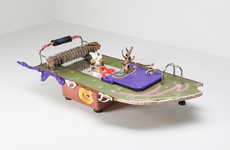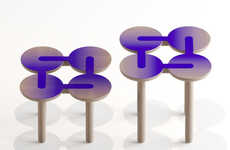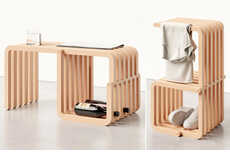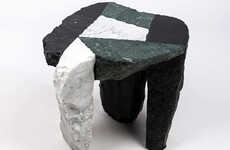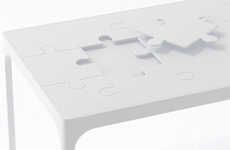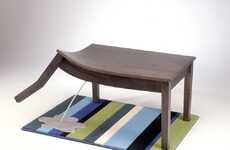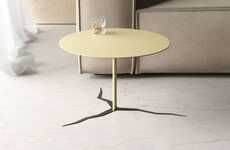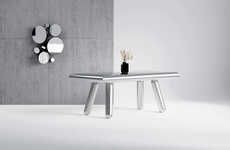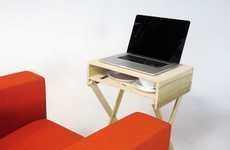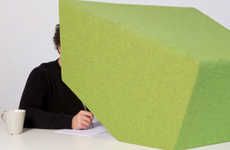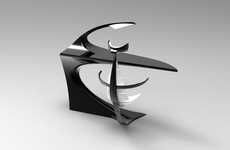
David Amar's Raymond Table is Made Out of Tools and Found Objects
Meghan Young — July 25, 2011 — Eco
The Raymond Table is genuinely a mess of a design, but this scrappy piece of furniture sports this look for a very good reason. Inspired by French poet and novelist Raymond Queneau and French chemical engineer and mathematician François Le Lionnais's 'OuLiPo' (or workshop of potential literature), the Raymond Table is far from a chaotic design. In fact, it has much purpose.
As designer David Amar puts it, "Each set of tools enables a range of possibilities, an open system, adjustable according to different environments and spatial requirements." Therefore, the Raymond Table has been composed according to defined constraints and sets of rules and principles, just as OuLiPo advises writers to approach their work.
The Raymond Table is made out of industrially manufactured tools with found materials.
As designer David Amar puts it, "Each set of tools enables a range of possibilities, an open system, adjustable according to different environments and spatial requirements." Therefore, the Raymond Table has been composed according to defined constraints and sets of rules and principles, just as OuLiPo advises writers to approach their work.
The Raymond Table is made out of industrially manufactured tools with found materials.
Trend Themes
1. Found Object Design - Designing furniture with found objects presents an opportunity for eco-friendly and unique products with a story.
2. Open System Design - Creating furniture with an open system allows for versatility and adaptability to different environments and customer needs.
3. Rule-based Design - Using rules and constraints to guide design can lead to innovative and purposeful creations, like the Raymond Table.
Industry Implications
1. Furniture Design - Found object design and open system design can disrupt the traditional furniture industry, offering customers unique and personalized pieces.
2. Sustainability - Found object design can disrupt the traditional manufacturing process and promote sustainability by utilizing pre-existing materials.
3. Creative Writing - The OuLiPo approach to writing, which encourages rule-based approaches to literature, could be applied to other creative fields for innovative outcomes.
2.5
Score
Popularity
Activity
Freshness


